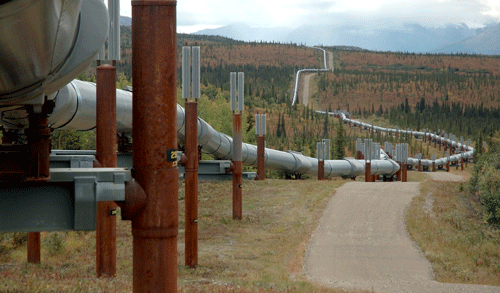
On August 4, 2022, John Spears, president of Spears & Associates, Inc., presented an “Outlook for the Oil and Gas industry” as part of the Valve Manufacturers of America (VMA) and Hydraulic Institute (HI) Market Outlook Workshop. When considering the pandemic, the ongoing conflict between Russia and Ukraine, and growing efforts to accelerate energy transition (to name just a few), having a projection of where the industry will stand in the coming months is as important as it has ever been. This article will serve as a summation of Spears’s talk and offer a glimpse at where the oil and gas industries may soon stand.
Oil
There are many questions surrounding the state of oil today as it attempts to rebound from “the dark days of the pandemic” that saw demand for oil drop as far as 15%. Demand has recently risen back close to pre-pandemic levels, with an additional projected increase of 1.7% in 2023; however, this does not mean the industry is no longer facing challenges.
Most are aware of the Russian-Ukraine conflict and of how recent sanctions have seen nations like the U.S. and U.K. cease or significantly reduce their intake of Russian oil. This has caused Russia’s production of oil to decrease about three million barrels a day as they work to find new buyers. As for the impact on the rest of the world, this has caused markets to start seeking new sources of oil, which has benefitted U.S. oil production, which increased about 6% this year.
Another question exists about the looming possibility of a recession and what that might mean for oil demand. Spears notes that production historically drops by about 400,000 barrels a day during a recession, which he says is not actually a lot of lost demand in context. As far as price is concerned, he says that worries over a recession may be offset by market struggles to increase their oil supply. This could feasibly leave prices at current levels, so even if there is a drop in demand, there is a good chance that prices would still be higher than they have been historically.
Natural Gas
In contrast to oil, the natural gas industry has made a full rebound from the pandemic. In fact, U.S. natural gas production is at its historic peak with liquid natural gas (LNG) exports rising about 20% this year with an additional 6% increase expected next year.
In terms of challenges, many of these have come through conservation efforts. Work to transition to clean energy has been steadily increasing over these past few years, and consequently, we have seen U.S. pipeline construction slow considerably, about 75% slower than its peak in 2019. Considering that it can take four to five years to complete a pipeline project, this has significant repercussions in terms of potential production. One positive for U.S. pipeline gas has come through global sanctions on Russian gas supply, which have caused some markets who previously looked to Russia for pipeline gas to turn to the U.S.
Where Things Stand
Despite a tumultuous few years, things seem to be beginning to take an overall turn for the better for the oil and gas industry, particularly in the U.S. American oil company CFOs are collectively expected to average about 40 billion dollars a quarter in 2022, a 100% increase from 2021, and this increased cashflow is allowing U.S. oil companies to reduce their debts and buy back stocks. This metric alone should inspire some confidence as to where things stand as we move into 2023 and beyond. There will certainly be challenges, but signs are pointing toward the industry being poised to meet them.
To learn more about market insights and attend more educational sessions from the VMA or HI, visit vma.org/page/education or training.pumps.org.


